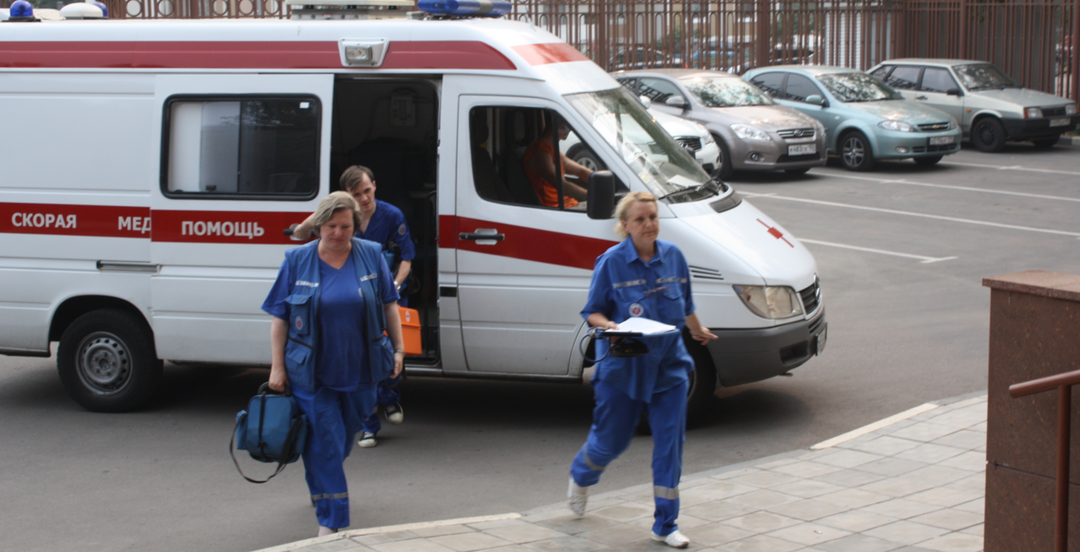Acute rheumatic fever

Acute rheumatic fever is a disease of connective tissue. In the course of it, the cardiovascular system, joints, skin and nervous system are predominantly affected. This disease occurs most often in young people 10-15 years after a previous infection of beta-hemolytic streptococcus group A.
The view that rheumatic fever is a joint disease is erroneous. The defeat of the joints during the course of the illness is brief and completely reversible. But the defeat of the heart often leads to heart disease and even to disability. The risk of defect formation is about 25%.Moreover, the valvular heart defect is often asymptomatic for several years, revealing itself during preventive examination or developed complications, such as heart failure and arrhythmia.
Symptoms of rheumatic fever
Symptoms usually appear three weeks after the transferred streptococcal infection( sore throat or pyoderma - skin infection).The temperature rises, the state of health worsens, there is pain, swelling and redness of the joints. More often large and medium joints( knee, shoulder, elbow) are affected. Characteristic of the emergence of migratory pain( pain changes its position, appears in different joints).The duration of such arthritis does not exceed 10 days.
Rheumatic carditis( heart disease) develops simultaneously with pain in the joints. Possible as minor changes, visible only with special studies, and more severe lesions - shortness of breath, palpitations, pain in the heart, swelling. Revmokardit is dangerous, because even with its easy flow the heart valves become inflamed, the normal flow of blood in the body is disrupted.
The defeat of rheumatic fever in the nervous system occurs in 15% of cases, in children more often than in adults. The child suddenly becomes capricious, absent-minded, irritable. Memory worsens, handwriting, gait and speech change. There are also manifestations of rheumatic fever, like ring-shaped red rashes on the skin. They, at present, are considered extremely rare.
Treatment and prevention
Treatment of rheumatic fever consists in strict adherence to bed rest( with active disease) and taking medications. It is aimed at eliminating symptoms and avoiding repeated attacks. When carditis( inflammation of the heart), you may need to refrain from consuming salt.
Special antibiotics are prescribed to remove the causative factor of the fever( microorganism of streptococcus).Usually antibiotics of penicillin series are used, but macrolides are tolerable if this group is intolerant. After the activity and the disease have been suppressed, it will be necessary to continue the use of long-acting antibiotics( for 4-5 years).
An important component of therapy is non-steroidal anti-inflammatory drugs( ibuprofen, diclofenac).They can reduce inflammation. The dosage of drugs, the duration of treatment is determined individually, depending on the age and general condition of the patient. With a delay in the body fluids are prescribed diuretics( diuretics).
Prevention of the development of rheumatic fever is the correct and timely treatment of streptococcal infection( pharyngitis, angina and streptococcal infections of the skin).Such infection requires the mandatory prescription of antibiotics. Treatment should last at least 10 days. Shorter courses are dangerous because of the possibility of preserving streptococcal infection. Today, such agents as biseptol, tetracycline, levomycetin and ofloxacin are no longer used to treat streptococcal tonsillitis. To prevent repeated attacks of acute rheumatic fever, antibiotics of prolonged action are prescribed. It is benzathine benzylpenicillin( retarpen, extensillin), drink at least 5 years.
In everyday life, one should not forget about observing the daily routine, about regular rational nutrition, temporary isolation of the tempering person, hardening, physical training. The hardened organism resists streptococcal aggression much better. Streptococcus is very widespread in our environment. He is in the dust, in handkerchiefs and in dirty underwear. Hence the conclusion is that daily wet cleaning, ventilation and regular change of clothes are necessary. It is also necessary to treat caries and chronic tonsillitis in time.



